Walk through any garden center or home store today and you’ll find rows and rows bursting with a beautiful array of summer flowers, vegetables, and herb plants. Spring has finally arrived, and gardeners in northern Idaho are eager to start planting everything from petunias to peppers.
Whoa, Nellie! Hold on a minute (or a few weeks). Just because these warm-season plants are available, doesn’t mean it’s time to plant them.
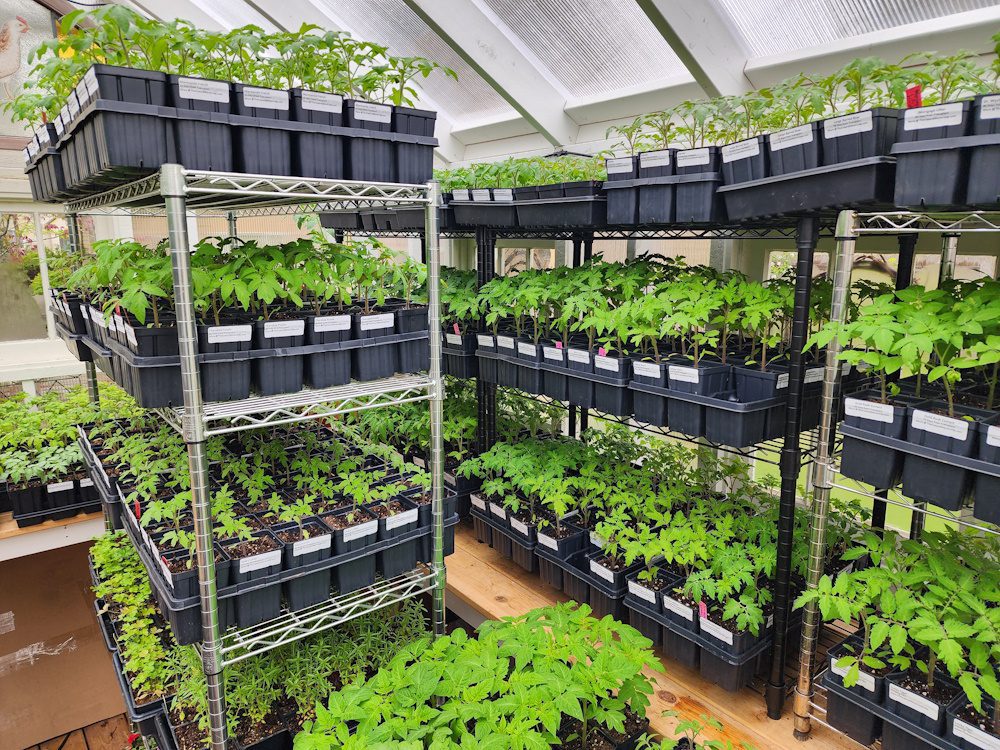
Know Your Frost Dates
If you have gardened in our region for any length of time, then you’re probably familiar with two old adages about when you can safely plant your warm-season vegetables and flowers. One is “When the snow is off Rathdrum Mountain;” the other is “Plant on Mother’s Day.”
Depending on the weather, some years that might be true. But for the most part, following this advice puts your warm-season plants at risk of succumbing to our unpredictable spring weather. It has snowed on Mother’s Day in Coeur d’Alene in the past. Brrr!
A more accurate method for safe planting is to go by your area’s last average day of frost in the spring. There are two frost dates; one for when you can expect a first frost in the fall and one for a final frost in the spring. This is an average date based on historical weather data for your area and on probability.
For Coeur d’Alene, Hayden, Post Falls, and Rathdrum, the probability of seeing 32⁰F on May 13th is 30 percent. Not bad. But, if you want even better odds, wait a week and plant around May 22nd when there is only a 10 percent chance frost.
For areas to the north or those at higher elevations, last frost dates are pushed even further out on the calendar. For example, Athol still has a 30 percent chance of frost on June 1st; it drops to 10 percent on June 14th.
Frost dates for various towns and cities in Kootenai and Shoshone counties can be found here.
Warm-Season Plants Require Warmth
Warm season vegetables and flowers (tomatoes, cucumbers, peppers, basil, petunias, marigolds, and zinnias to name a few) are highly susceptible to cold temperatures and will quickly die off in cold, wet soil. To grow and thrive, these plants require warm soil (at least 55⁰F) and warm air temperatures.
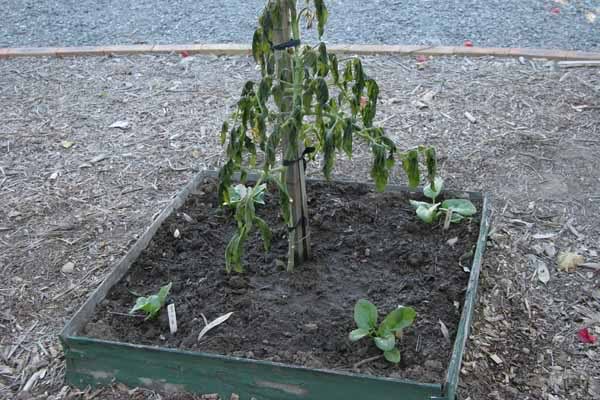
When warm-season plants are put into the ground before these temperature thresholds are met, at best they will remain static with no growth until conditions change, or worse case, they will perish.
Plan to Hold Tender Plants for a Few Weeks
In case I haven’t been clear… early May is not an optimal time to plant warm-season plants in northern Idaho.
If you’ve already purchased warm-season plants and they have been hardened off (acclimated to the outdoor environment) you can hold plants outdoors for a few more weeks until weather conditions improve. Most plant vendors will have hardened their stock before selling, but it’s always a good idea to ask.
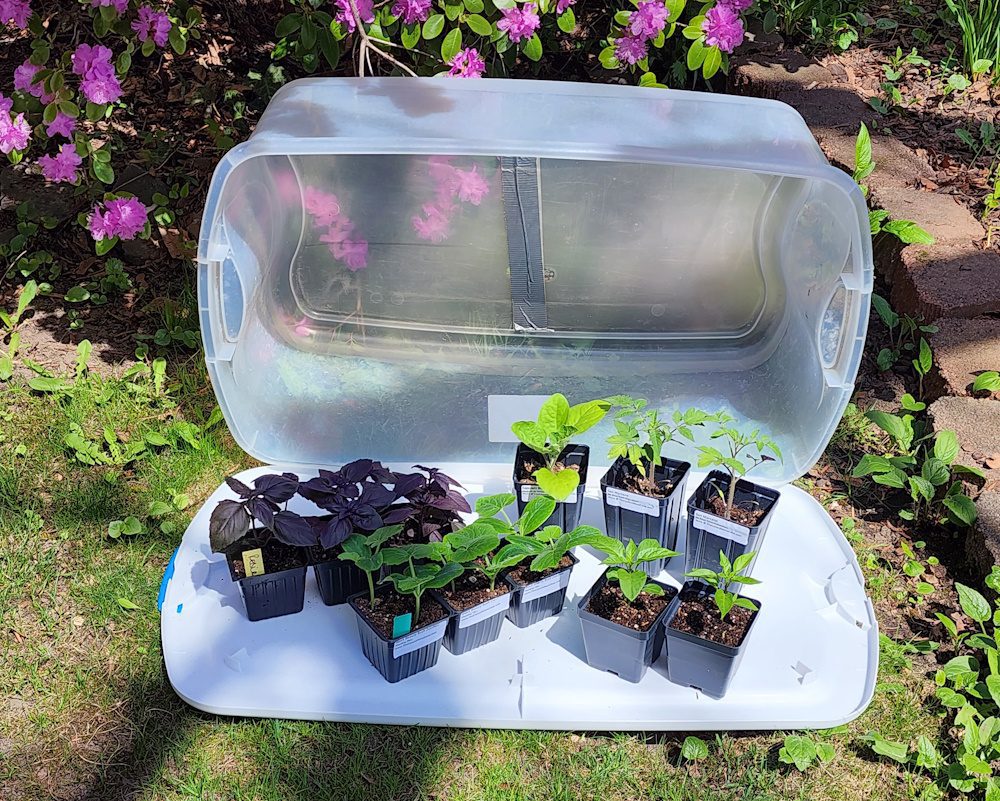
Place young transplants outside during the day in an area protected from intense sunlight and wind. In the evening, move plants inside a garage or other protected area out of the danger of frost.
Avoid bringing hardened off plants into the house for an extended period, as the temperature in your home is likely to be too warm for plants that have already acclimated to the outdoors.
Keep Frost Protection at the Ready
If your warm-season flowers or vegetables have already been planted, you’ll need to have some form of frost protect ready for any late frosts, cold rains, or wind.
A row cover is perhaps one of the best items a gardener can have at the ready. Row covers are made of lightweight polypropylene or polyester fabric that allow rain and sunlight to pass through. Most importantly, they help to insulate plants from cold and wind.
Row covers can also be used later in the season to keep insects off plants and to serve as a shade cloth to keep plants from overheating.
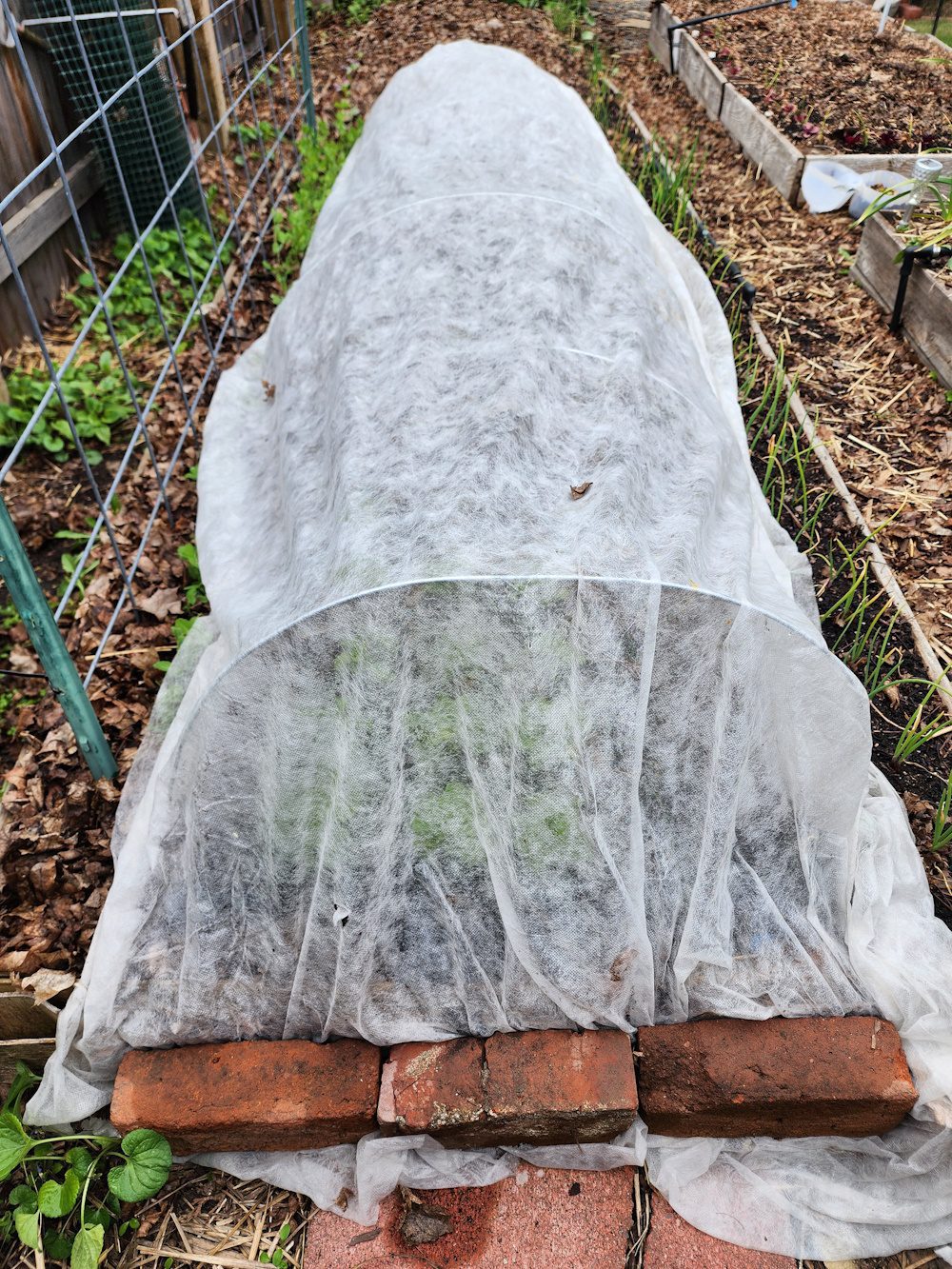
Another inexpensive item to protect plants is a clear plastic storage tub. When placed over plants, these tubs will create a mini-greenhouse environment. Recycled items like plastic milk jugs or plastic lettuce containers can also be used to protect smaller seedlings. Just make sure to anchor the container so it doesn’t blow away.
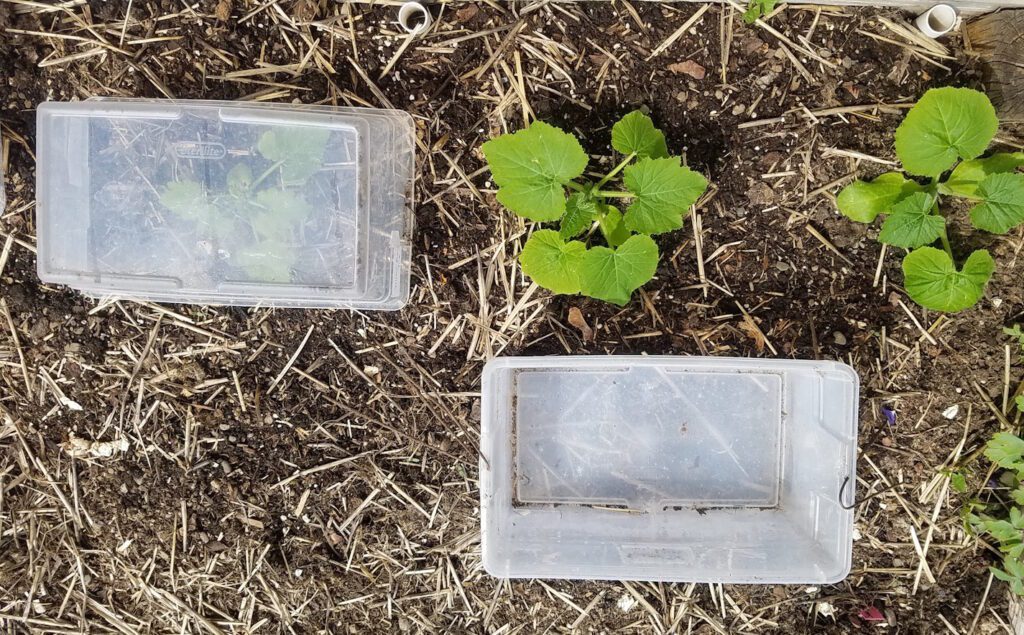
Note the wire anchors to keep the boxes in place.
Low-tunnels require a bit more effort to construct, but are excellent forms of protection for larger growing areas. A simple low-tunnel can be made by using PVC pipe and 6 mil plastic sheeting.
It’s worth the small investment, as low-tunnels can extend your growing season in both the spring and fall. And, once the weather warms the plastic can be removed and the structure left in place to hold a shade cloth when summer’s heat soars.
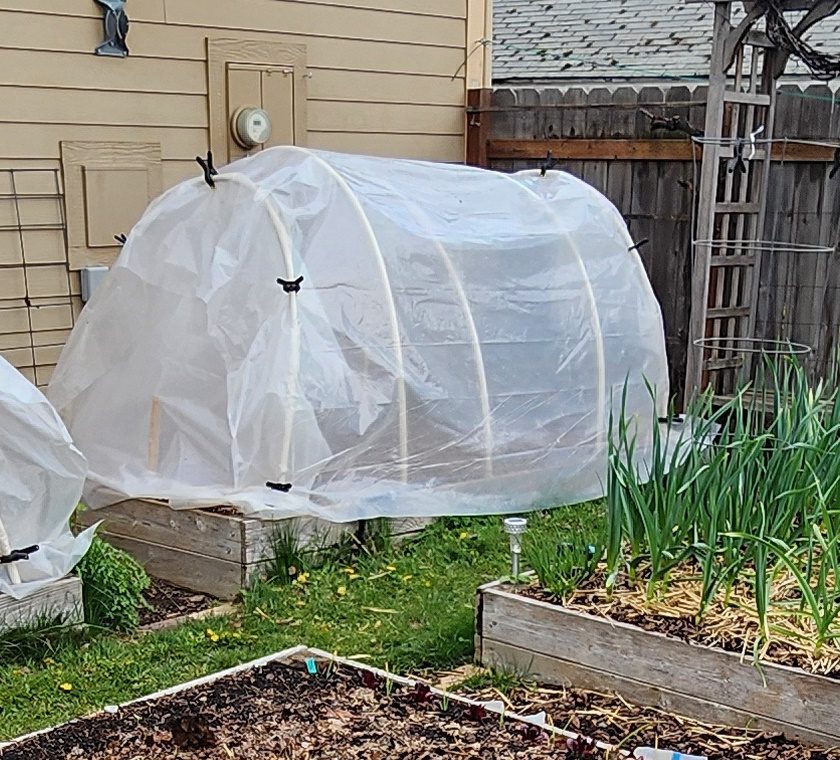
So, before your grab your trowel and head out to the garden to plant your tomatoes, check your last average frost date and have some frost protection handy. And… if you really feel the need to dig in the soil, now is a great time for weeding!


Leave a Reply